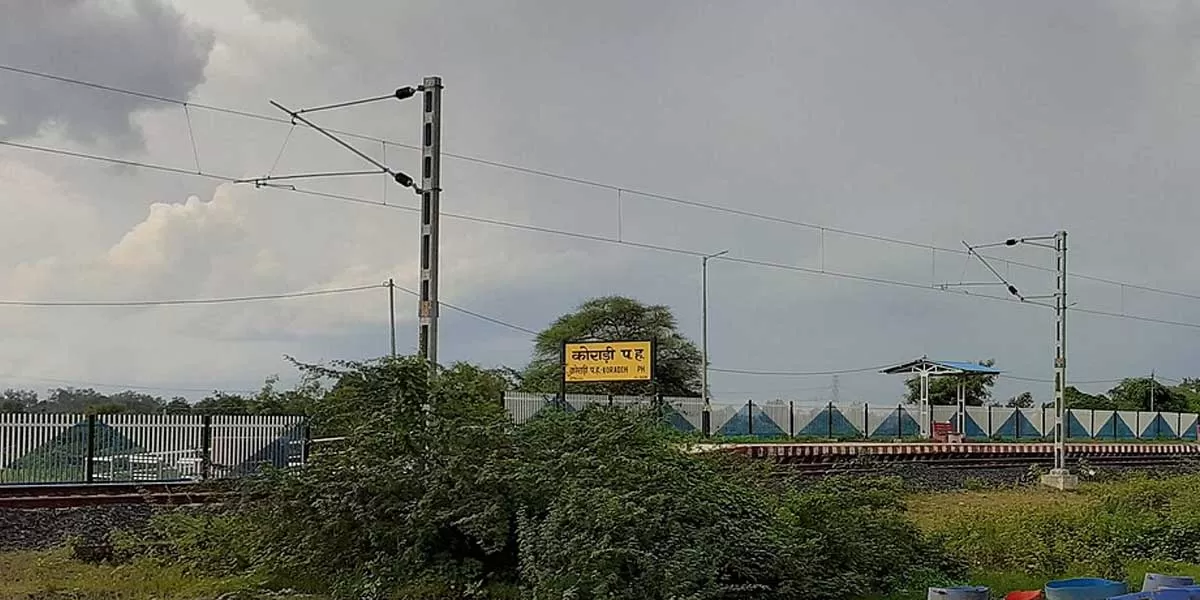CW identifies key trends and new launches in major material handling equipment segments.Demand for material handling equipment in India is inching upwards.“We expect the Indian material handling equipment segment to grow at a CAGR of 8-10 per cent in the next four to five years, ahead of the 5 per cent growth projected globally,” predicts Pradeep Sharma, President, Action Construction Equipment (ACE).In India, Sharma reckons that material handling equipment accounts for about 13 per cent of the construction equipment industry. “Within this, the top sellers are pick-and-carry cranes (27 per cent), forklifts (12 per cent), and slew, crawler and tower cranes together (24 per cent).”Sizing upSomewhere between 3,000 and 4,000 pick-and-carry cranes are sold every year in India, estimates Ajay Kumar Somani, Construction & Material Handling Equipment Consultant and Former Director, Liebherr India.And according to Asim Behera, COO, Daifuku India, the Indian market absorbs 10,000-12,000 forklifts priced between Rs 0.5 million and Rs 3.5 million every year.Beyond this, Behera pegs the market for mechanised material handling systems (such as conveyors and chutes) and fully automated systems offering full product track-ability (such as warehouse management systems, automated storage and retrieval systems, robots, automated guided vehicles) at Rs 20-25 billion.Mobile cranesThe construction and infrastructure development sectors are spurring demand for pick-and-carry cranes (9-30 tonne) and truck-mounted cranes (25-60 tonne), and the manufacturing sector also makes use of these cranes, says Sharma. “Truck-mounted cranes are usually preferred to crawler cranes, with the latter taking precedence to implement construction, mining, energy, transportation and logistics projects in rough terrain.”“We are seeing good growth in demand for mobile cranes of capacity 250 tonne and above,” says Saeesh Nevrekar, Director, Sales and Service, Terex Cranes. “Our clients are mostly crane rental companies, who serve the needs of companies engaged in the construction of roads, bridges, metro underground tunnels and refinery expansions. In the past three to six months, they have reported crane utilisation rates of 80-85 per cent, which is boosting demand for our product.”Demand for higher capacity mobile cranes, typically tyre-mounted cranes of capacity over 100 tonne class and crawler cranes of over 400 tonne class, is mainly from the windmills sector, refineries and, to a small extent, from metro projects, says Somani. “New thermal power projects and nuclear power projects are not happening as expected.”In his opinion, owing to falling rental rates, the ongoing payment crisis and bank loans being more difficult to procure, service providers are mostly buying Chinese-made cranes or used cranes from the international market as such cranes are about 40 per cent less expensive than new European models, despite the fact that they usually need more maintenance and longer time to erect.Anil Bhatia, Vice President, Sales & Marketing, TIL, expects a 15-20 per cent increase in demand for mobile cranes, with a number of big infra projects expected to start this year, such as the bullet train between Mumbai and Ahmedabad and the expansion of the Reliance Jamnagar refinery. “Tenders for the high-speed bullet train between Mumbai and Ahmedabad have already been floated. And as the track will be elevated for most of the stretch, the demand for mobile cranes will be high.”The oil sector will be another major demand driver for mobile cranes, adds Bhatia. “With crude prices hardening, new investments are picking up.” Additionally, he notes that new mining tenders in FY20 and new irrigation projects in the states of Telangana, Andhra Pradesh and Maharashtra will further boost demand.Sharma expects government investments in Tier-II and Tier-III cities and rural areas and projects such as smart cities, Sagarmala, metro rail, dedicated freight corridors, Pradhanmantri Awas Yojna and bullet trains to drive demand for mobile cranes.New launches:Recent launches from ACE include multifunctional cranes designed to replace two machines, for users to enhance operational efficiency and reduce capex, explains Sharma. These are the NX360° slew cum pick-and-carry crane, the NXT 15-tonne pick-and-carry crane combined with a telehandler and NXP pick-and-carry crane that doubles up as an aerial work platform hydraulically operated from the top.TIL has added five improved models in the 45-80 tonne category to its range of long boom truck cranes (boom length in excess of 40 m), all of which have found good acceptance in the market, according to Bhatia. “The encouraging market response to this innovation has led us to do the same for our range of rough terrain cranes as well.”ACE is also developing a dedicated chassis for truck cranes instead of relying on commercial vehicle chassis procured from the market. With this initiative, the company proposes to expand its offerings to 80 tonne (from 40 tonne) in the truck crane category, thereby “catering to almost 80 per cent of the market need for the next few years”, says Sharma. “The 25 tonne, 30 tonne, 45 tonne and 55 tonne models are ready; the 60 tonne and 80 tonne will be ready in the next six months.”Going forward, ACE will bring out 100 tonne and 160 tonne crawler cranes to add to its existing portfolio of 40 tonne and 75 tonne capacity models. Automated handlingDemand for sophisticated solutions, such as high-speed conveyors and sorters and automated storage retrieval systems, has been rising for the past four to five years as large companies look to work more productively and blue-collar workers become hard to find, says SPS Chauhan, Director, Asia & Middle East, Bastian Solutions. “We clocked 30-50 per cent growth in the previous year as against the industry average of 20 per cent.”Of the sectors demanding material handling equipment for warehousing, Chauhan observes that the e-commerce, pharmaceutical and food industries are doing well while the automative industry is going through a low.Behera shares that, last year, the demand for fully automated material handling systems, the area Daifuku operates in, was lower than the double-digit growth in previous years, mainly coming from the paint, tyre, food and beverage sectors.Automated material handling involves a number of systems. A typical warehouse of Amazon India spans 400,000 to 600,000 sq ft. In several such distribution centres, Bastian Solutions has provided about 1.0-1.5 km of conveyors and high-speed lifts with a 10-m reach, which have helped increase throughput from 10-15 warehouse bins per minute to 60-120 bins per minute. “What helps is that 80 per cent of the products that Amazon India deals in fit in the standard warehouse container size (600 mm × 400 mm × 400 mm),” explains Chauhan. “So while the actual picking of the product from the bin and packing is still done manually, the automated retrieval significantly speeds up operations.”At an ITC warehouse in Trichy, rail-guided vehicles and 19 cranes are helping to store and retrieve about 1,500 finished goods at 20,000 locations. “We have helped the FMCG giant achieve a throughput of 250 trucks a day and remain on call to ensure the system is up and running over the 24-hour day,” says Chauhan.Behera expects manually operated material handlers to see the highest growth rates in the current year, led by companies consolidating their operations to tap the benefits of GST. He expects demand for fully automated systems to come into its own when companies focus on increasing their ability to store and pick goods and improve their throughputs and operational efficiency.New launches:Globally, product development at Daifuku has largely been driven by the need of the ecommerce sector for picking and storing systems delivering high throughputs, says Behera. Within India, Daifuku offers automotive factory automation (AFA) and factory automation and distribution automation (FADA) solutions capable of handling a large variety of products delicately and securely, to enable smart factories. In India, Daifuku has been looking at moving forward from importing equipment from Japan. “With the acquisition of Vega conveyors in April 2019, Daifuku is set to apply its century-old experience to locally make products tailored for the Indian market,” he adds.Bastian Solutions offers 3,500 products across 300+ supplier partners from across the world. Being a system integrator means the company can offer new products from global providers as they are released, explains Chauhan.Reach stackersBhatia expects the market demand for reach stackers for handling containers to increase to 140 units in the next year, from 100 units in 2019.He predicts that the increasing containerisation of the inland transport of commodities previously sent as bulk cargo, such as rice, granite and cement, and the opening of dedicated freight corridors from 2020 onwards, will be major demand drivers for reach stackers. In turn, these developments will facilitate the faster and more cost-effective movement of containerised goods vis-à-vis road transport. With the containerised inland transport of goods currently standing at not more than 5 per cent of the total countrywide movement of goods, as against 20 per cent in developed nations, as per Bhatia, this segment of the material handling equipment industry has huge growth prospects.Forklifts, stationary cranes, etcACE’s range of forklifts and forklift trucks (and allied products such as pallet trucks and stackers) is primarily being demanded by the warehousing, transportation and logistics sectors. While the company offers diesel forklifts (1.5 tonne-3.5 tonne), electric forklifts (1.5 tonne-8 tonne), and LPG forklifts (3 tonne) and manual, semi-electric and fully electric variants of pallet trucks and stackers, “diesel variants of forklifts and manual material handlers are preferred for their lower upfront cost”, says Sharma.ElectroMech is the market leader in electrically operated cranes and caters to economically vital sectors like infrastructure, steel and metals, oil and gas, energy (hydropower, nuclear) and renewable energy like wind. It has expanded the range of its material handling solutions and added forklifts and lift trucks in association with Hyster Yale. This product range serves the Indian market with a focus on the retail, 3PL, logistics, warehousing and e-commerce sectors.Cranedge, a wholly-owned subsidiary of ElectroMech, provides life-cycle services (annual maintenance, handling distress situations, repairs, refurbishment, relocation, etc) to material handling equipment users. “We are excited about developments in retail and e-commerce, manufacturing plants, automobile, marquee infrastructure projects like bridges, metros, expressways, highways in India and outside, large energy projects like hydropower and wind energy, nuclear applications, and the oil and gas sector,” says Tushar Mehendale, Managing Director, ElectroMech.Sharma expects growth in the retail, automotive, ecommerce, logistics, freight and cargo and pharmaceutical sectors to drive demand as the Make in India initiative takes root and companies become more focused on reducing labour costs and implementing worker safety norms.New launches:“Our end-user sectors are expanding and demanding smarter solutions that reduce cost of operations and downtime and enhance productivity manifold. With increasing business complexity, companies need to respond to changing market dynamics with agility and accuracy,” explains Mehendale. In response, ElectroMech has introduced fuel-efficient forklifts with advanced features like telemetry and automation. In partnership with Sweden’s Easy Mover, ElectroMech now offers a range of rollers, pushers and push, pull, manoeuvres, which can move up to 100 tonne weight using pneumatic force and batteries. This equipment is ideal for car assembly lines, paper mills, etc. “At ElectroMech, it is our constant pursuit to combine advanced technological elements with our solutions,” he adds. “Many of our solutions like Wi-Fi synchronisation for tandem operation and remote monitoring of cranes are industry benchmarks. We also specialise in customised products such as stacker cranes and transfer trolleys.”

















